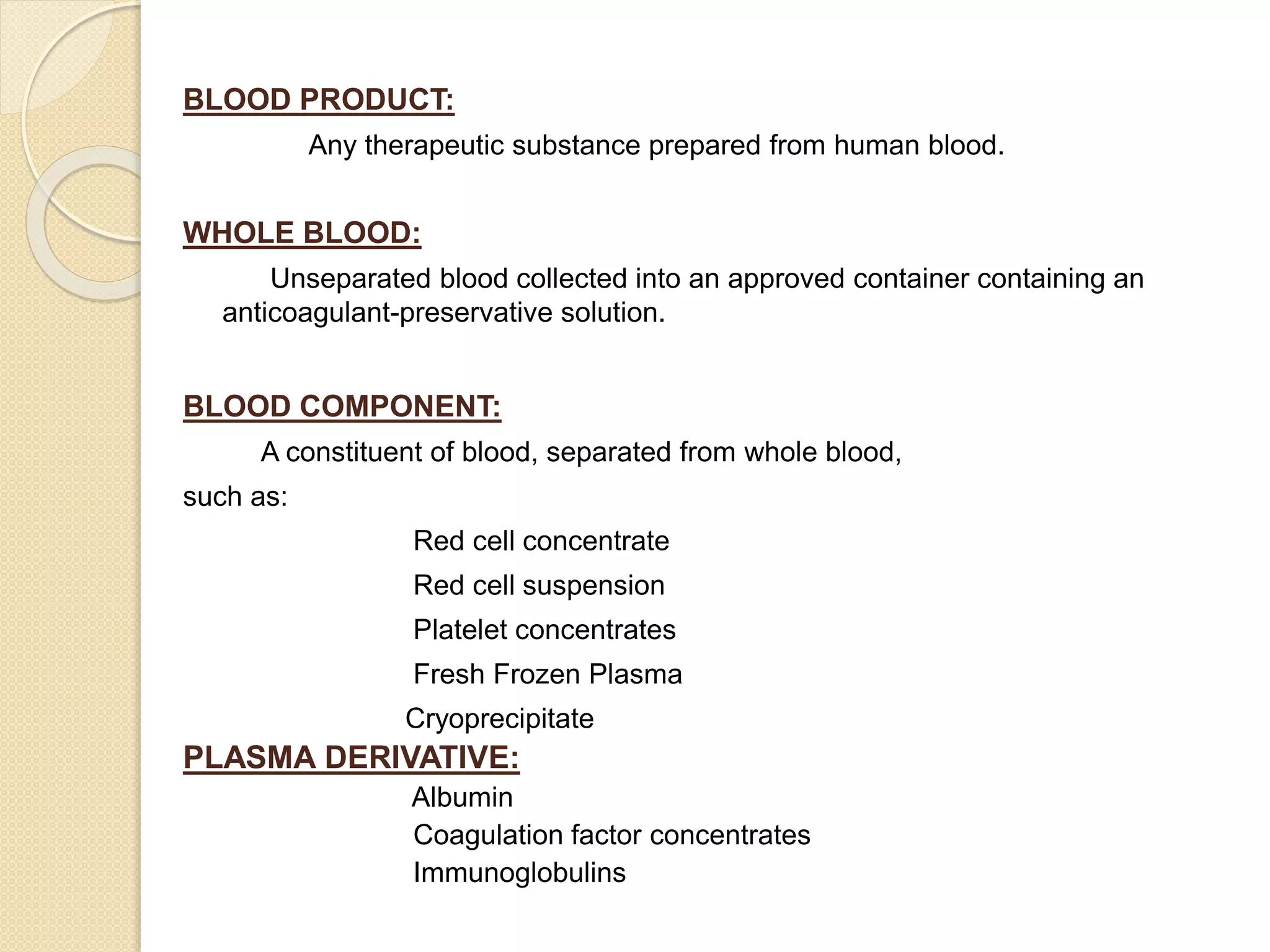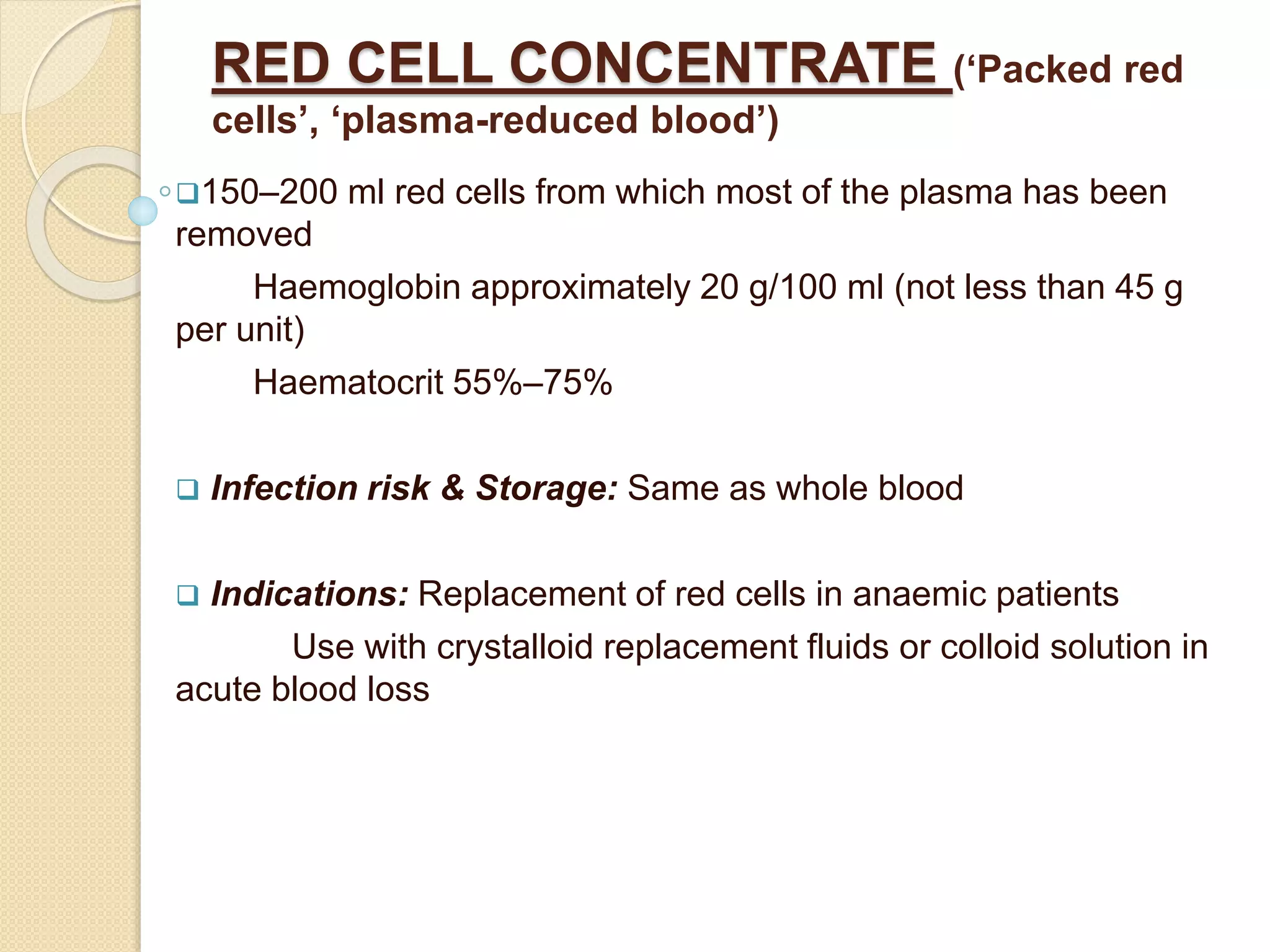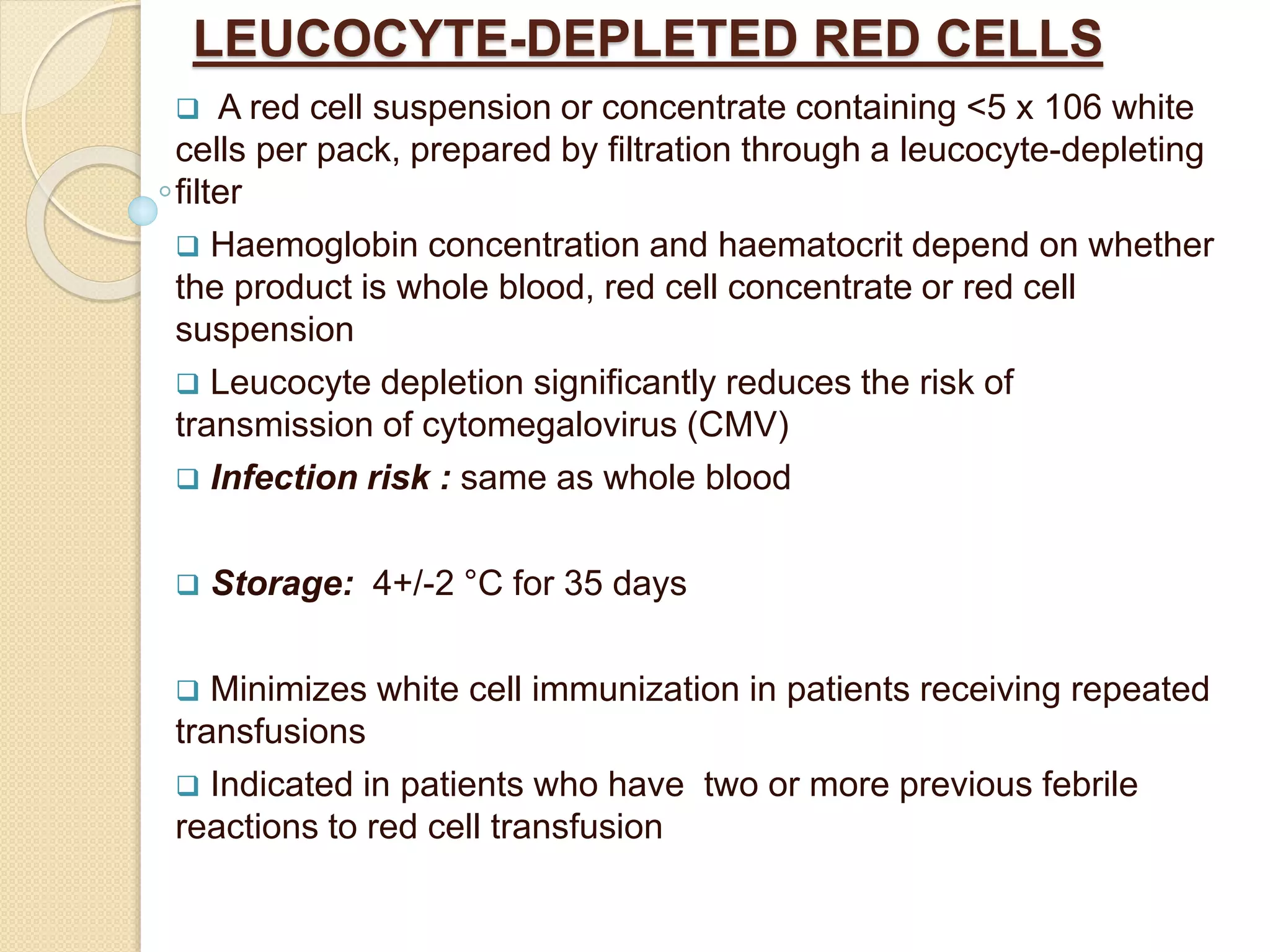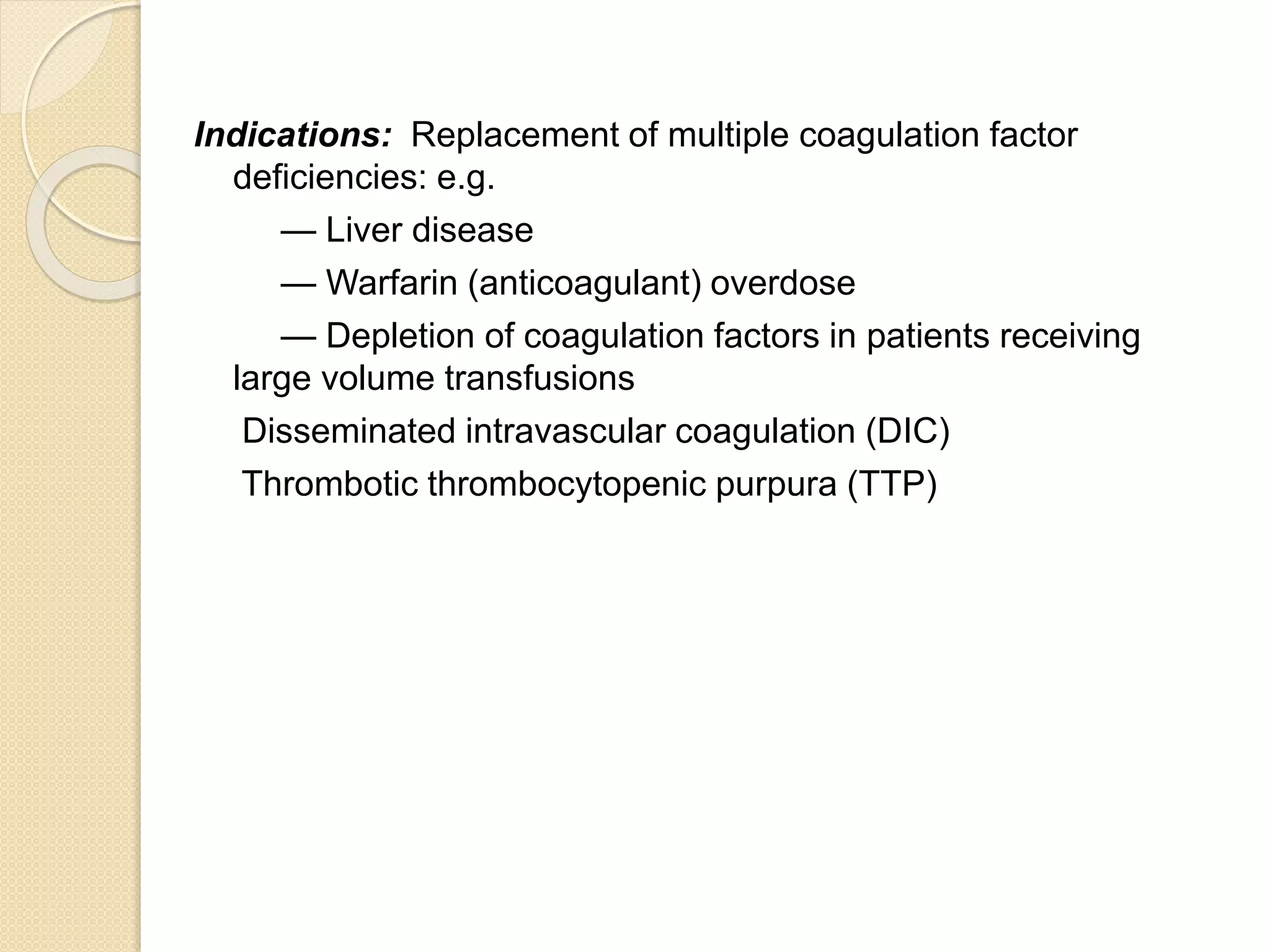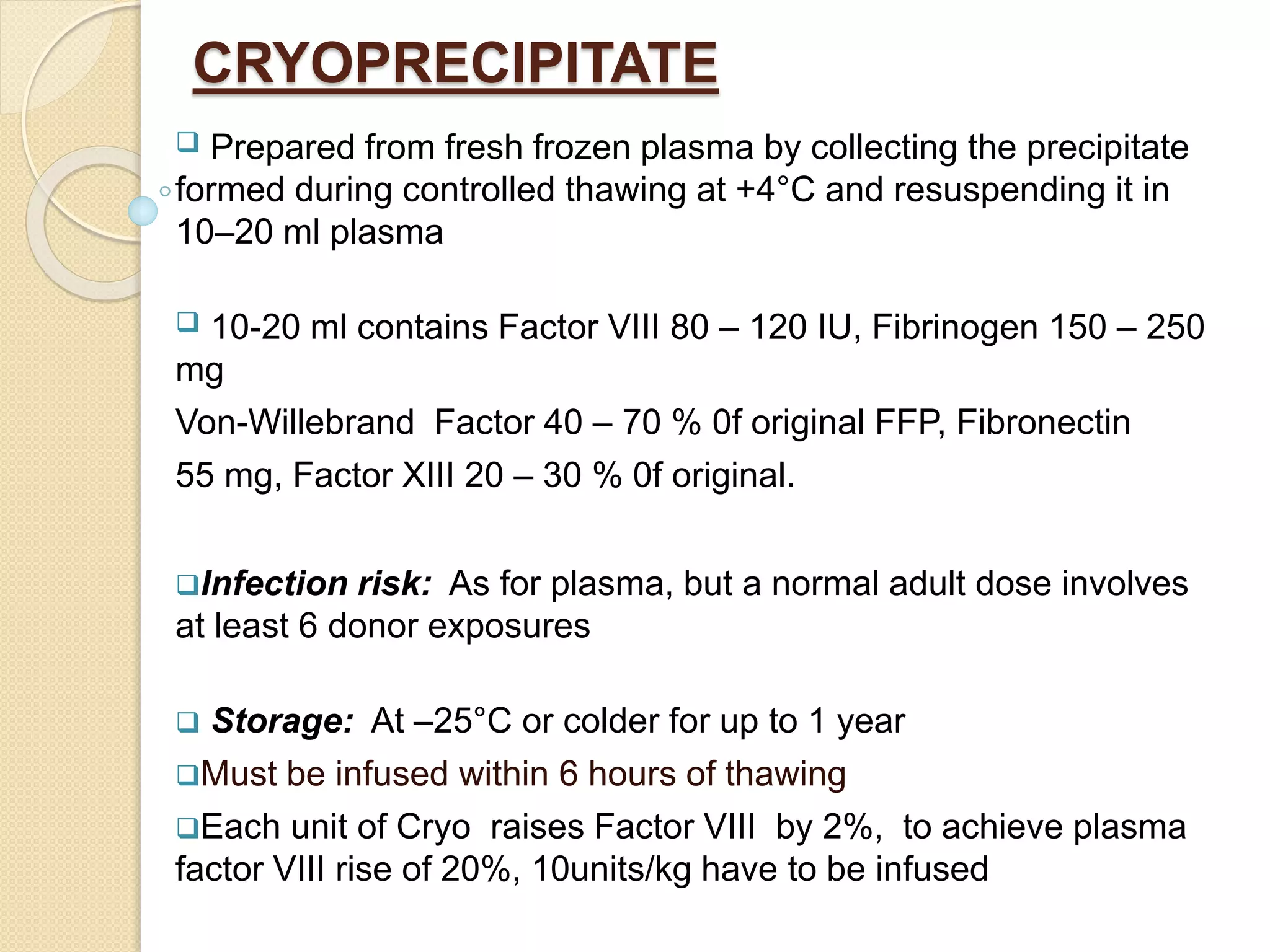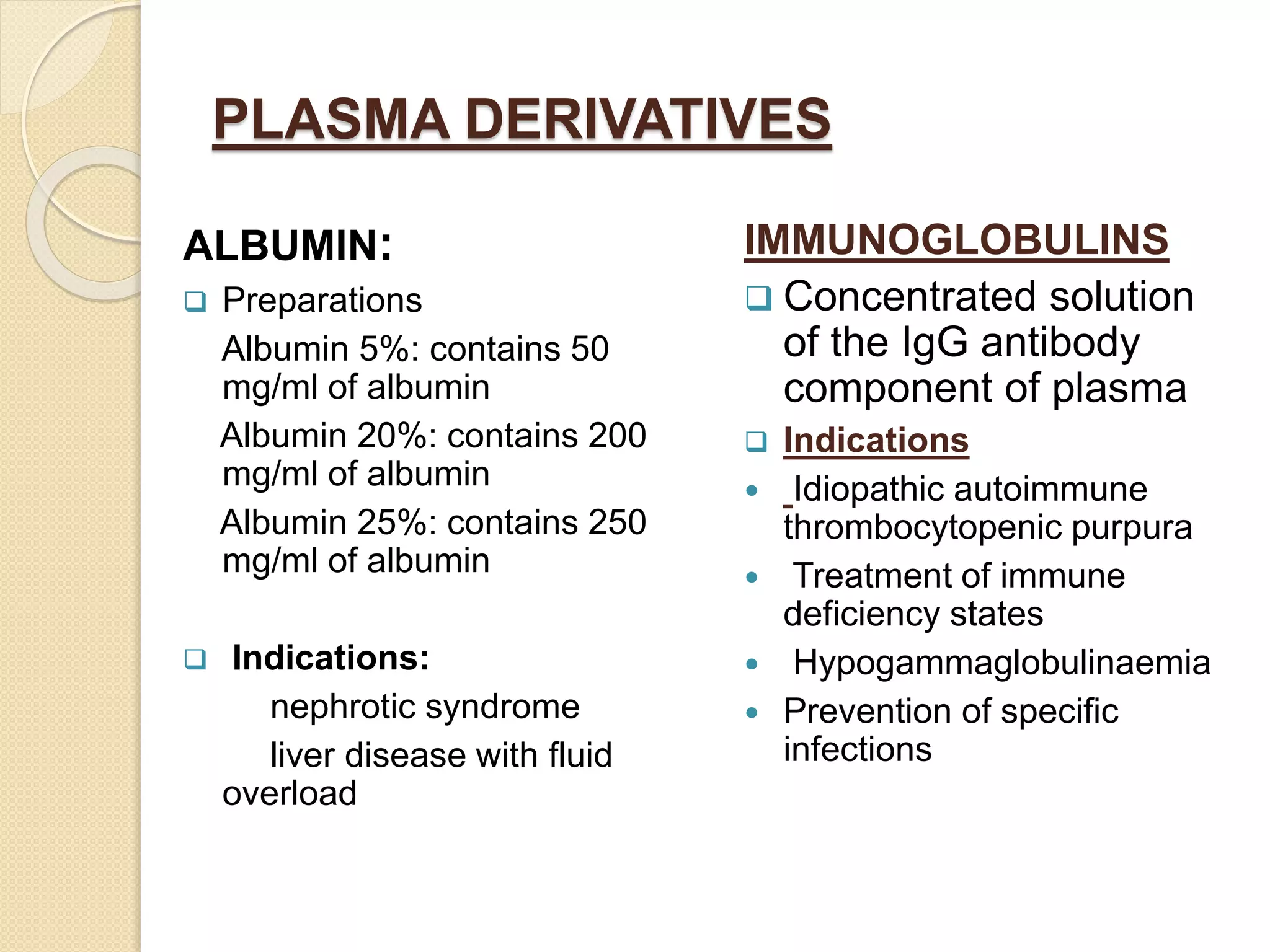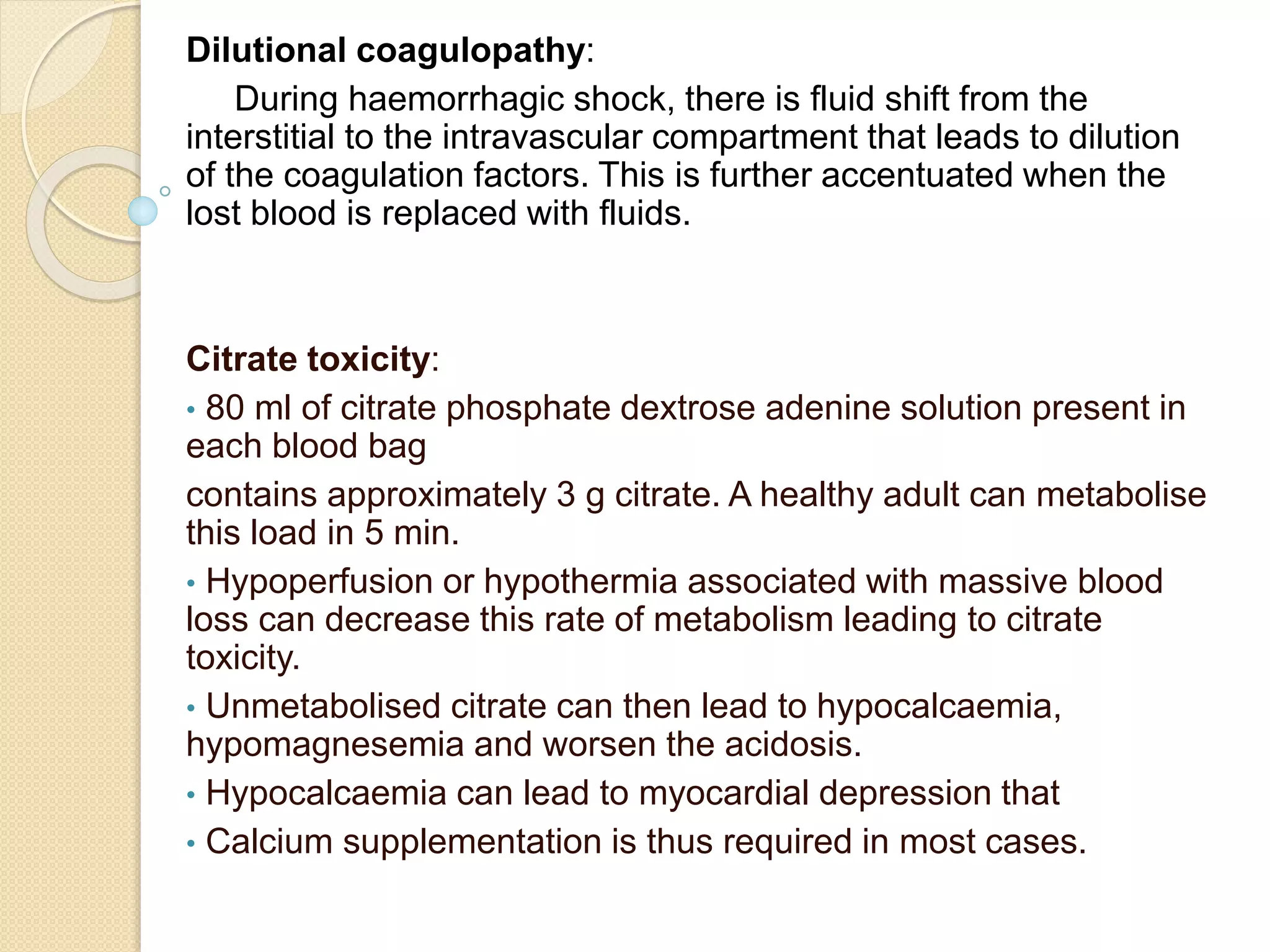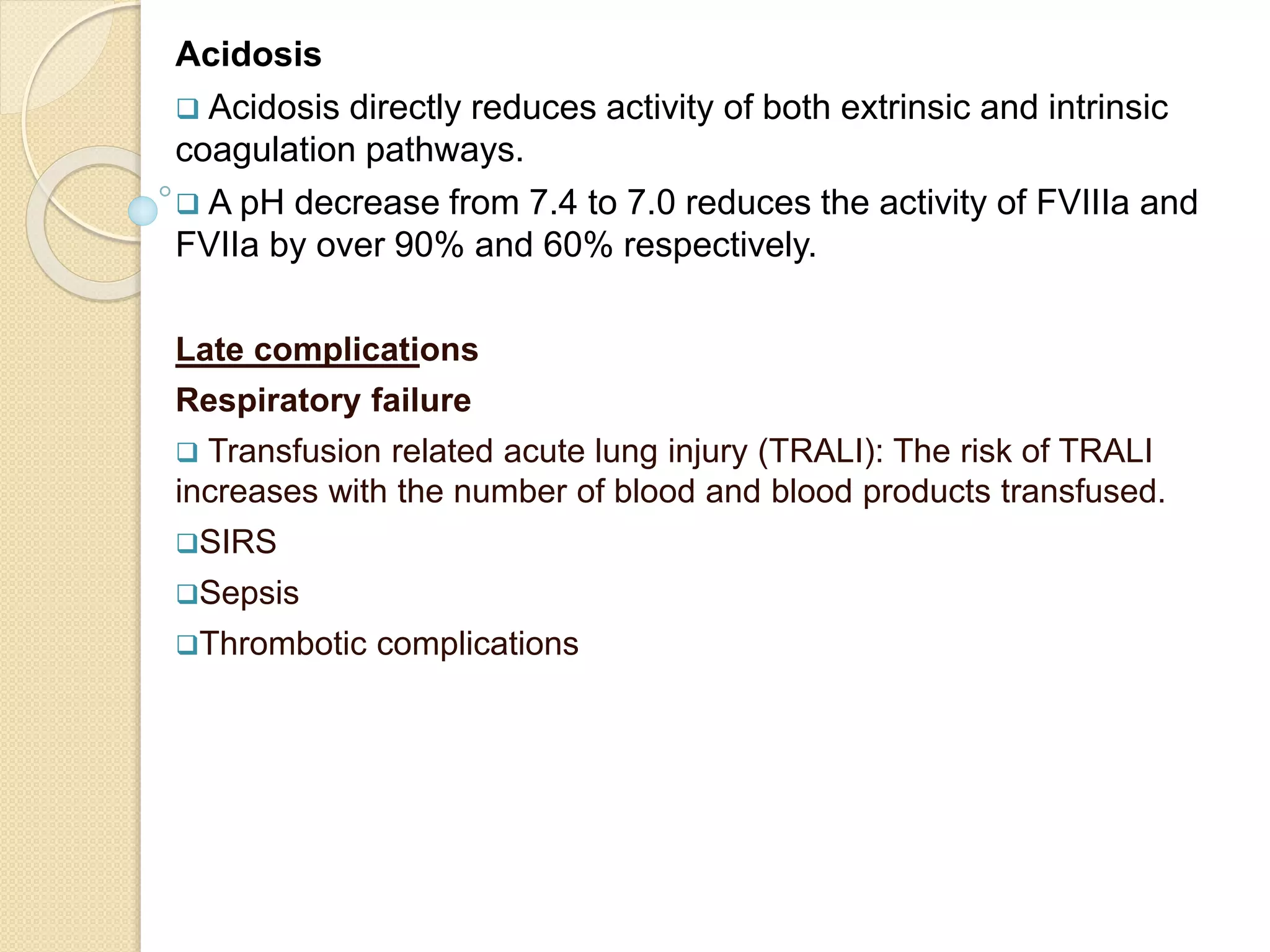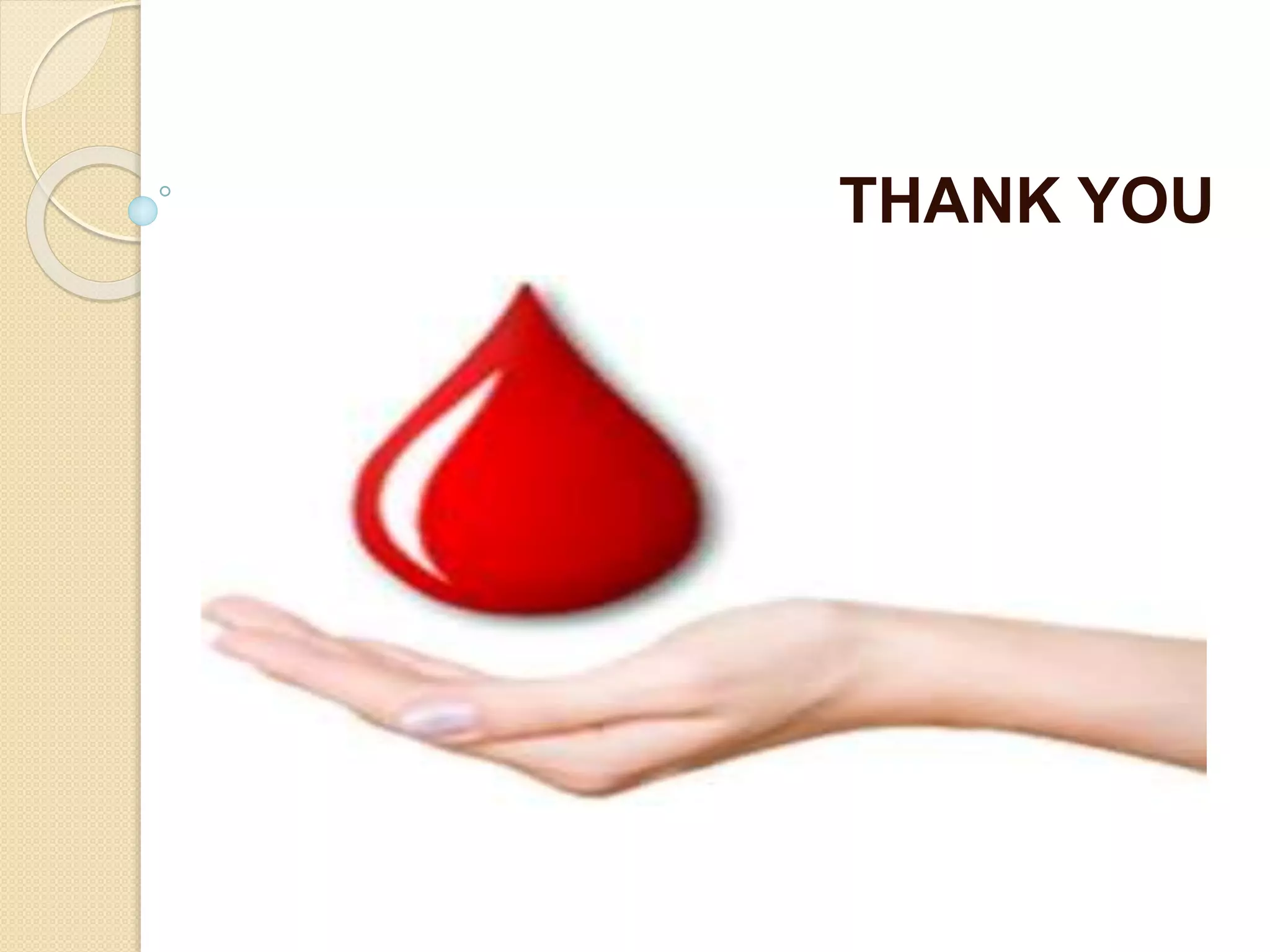This document provides information on various blood products and massive blood transfusion. It defines massive blood transfusion as replacing one entire blood volume within 24 hours or transfusing over 10 units of packed red blood cells in 24 hours. It describes components of blood like whole blood, packed red blood cells, plasma, platelets, and plasma derivatives. It discusses indications, storage, and risks of these products. It also outlines complications of massive transfusion like coagulopathy, hypothermia, acidosis, and circulatory overload and targets for resuscitation like maintaining hemoglobin, coagulation factors, platelets, pH, and temperature.

